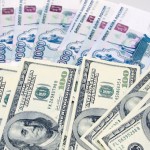Gold swung between gains and losses on Wednesday as investors avoided entering big positions before the Federal Reserve releases minutes from its October 28-29 policy meeting. A steady dollar kept upside movement checked.
On the Comex division of the New York Mercantile Exchange, gold futures for settlement in December stood 0.08% higher at $1 198.0 per troy ounce at 8:54 GMT, having shifted in a daily range of $1 201.0-$1 191.0. The precious metal rose 1.15% on Tuesday to $1 197.1 after it touched a 2-1/2-week intraday high of $1 204.1.
Gold traded not far off yesterdays high after a series of short-coverings, but with bearish factors still in control of the market, the precious metal failed to turn its psychological resistance of $1 200 into a support.
The US dollar gained against a basket of major trading partners on Wednesday. The greenback reached a fresh seven-year high against the yen after the Japanese economy shockingly slid into recession and Bank of Japan introduced no changes to monetary policy on Wednesday.
Support was drawn by physical demand from central banks. Russias central bank has purchased 150 tons of gold so far in 2014, governor Elvira Nabiullina said on Tuesday, compared to 77 tons in the previous year, according to IMF data.
ECB Executive Board member Yves Mersch said yesterday that the central bank may adopt unconventional measures to counter low inflation, including the purchase of assets such as gold, exchange-traded funds, sovereign debt, and even real estate.
Investors also eyed an upcoming referendum in Switzerland on November 30th when voters will decide whether the country’s central bank should keep at least 20% of its assets in gold, compared to the current 8%.
However, despite the improving physical demand stemming from lower prices, the markets bearish stance is still in play, with the precious metals movement remaining predominantly tied to swings in the US dollar.
Sun Yonggang, a Shanghai-based macroeconomic strategist at Everbright Futures Co., wrote in a note, cited by Bloomberg: “Central banks outside the U.S. continue to maintain loose monetary policies, a key driver of the dollar which in turn provides direction for gold.”
The US dollar index for settlement in December traded at 87.695 at 8:58 GMT, up 0.06% on the day, having varied in a daily range of 87.850-87.670. The contract shed 0.41% on Tuesday to 87.645, pressured by a stronger euro, but remained in close proximity to Fridays 4-1/2-year high of 88.365.
Apart from the Fed minutes, market players also awaited the release of key housing and inflation data from the US, as well as a slew of preliminary manufacturing and services sector activity gauges from the US, Europe and Asia.
Reflecting grim investor sentiment toward the precious metal, assets in the SPDR Gold Trust, the biggest bullion-backed ETF, remained unchanged at 723.01 tons on Tuesday. Holdings fell to 720.62 tons on Thursday, the lowest since September 2008.
Elsewhere on the precious metals market, silver for delivery in December gained 0.19% to $16.205 by 8:54 GMT, while platinum January futures were up 0.20% at $1 207.0. Palladium for delivery in December stood at $772.50 an ounce at 8:49 GMT, down 0.54%.
Pivot points
According to Binary Tribune’s daily analysis, December gold’s central pivot point on the Comex stands $1 194.6. If the contract breaks its first resistance level at $1 206.6, next barrier will be at $1 216.0. In case the second key resistance is broken, the precious metal may attempt to advance to $1 228.0.
If the contract manages to breach the S1 level at $1 185.2, it will next see support at $1 173.2. With this second key support broken, movement to the downside may extend to $1 163.8.





